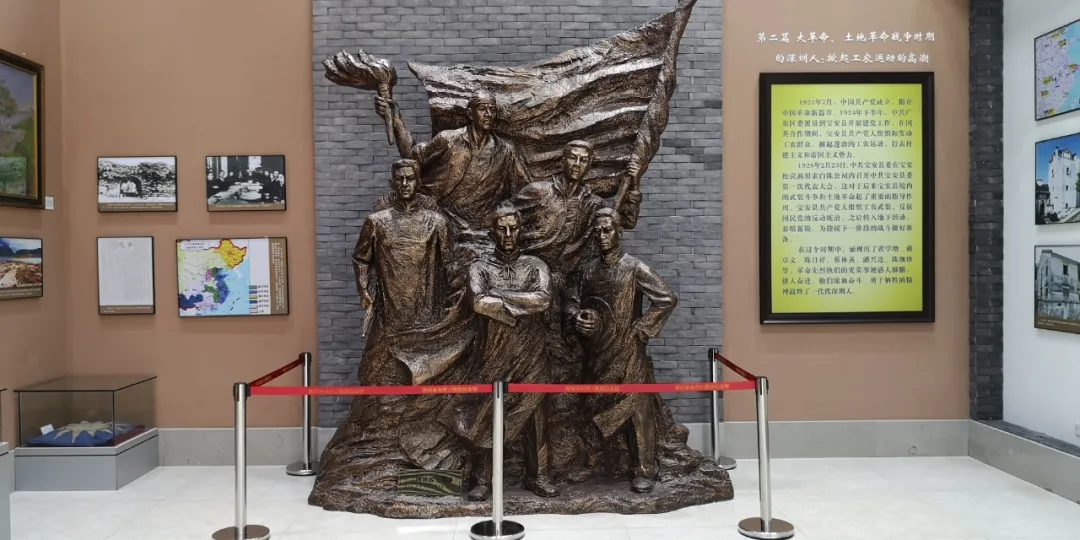A visit to the city’s martyrs cemetery
Writer: Han Ximin | Editor: Vincent Lin | From: Shenzhen Daily | Updated: 2021-03-18
Shenzhen Revolutionary Martyrs Cemetery, an education base for the history of the Communist Party of China (CPC), revolutions in Shenzhen and patriotism, is located at the intersection of Beihuan Boulevard and Caitian Road in Futian District.
Entering the cemetery, an imposing monument of 27 meters comes into sight. The 3.5-meter-wide monument was inscribed with the words “Revolutionary Martyrs are Immortal” written by Zeng Sheng, commander of Dongjiang Column. The monument, erected in 1983, is surrounded by green pines and luxuriant cypresses, signifying the evergreen and everlasting revolutionary spirit.

A sculpture of the five main participants of the Sanzhoutian Uprising is on display at a memorial hall of the Shenzhen Revolutionary Martyrs Cemetery. The uprising, led by Sun Yat-sen in 1900, is known as the start of China’s democratic revolution against the Qing Dynasty’s royal court. The troops marched from Huizhou to Shenzhen.
At the southwest corner of the cemetery lies a pavilion, where the names of 1,050 Shenzhen revolutionary martyrs since 1900 had been inscribed, including 490 who gave their lives during the War of Resistance Against Japanese Aggression (1931-1945), 416 during the War of Liberation (1945-1949), 65 during the Socialist Revolution and Socialist Construction (1949-1976) and 25 martyrs who had died since the launch of reform and opening up.
The ashes of Zeng Sheng, a Pingshan native, were also interred at the cemetery. Zeng joined the CPC in 1936 and served as the commander of the Dongjiang Column during the War of Resistance Against Japanese Aggression. He made great contributions to the victory in the South China battlefield.
He died in November 1995 and the CPC Central Committee and State Council approved to lay his ashes at the cemetery in May 1996.
The Shenzhen Revolutionary Martyrs Memorial Hall was built and opened in 2018. It has a space of 1,000 square meters. It exhibits materials, pictures and remains of revolutionary martyrs and is divided into five sections.